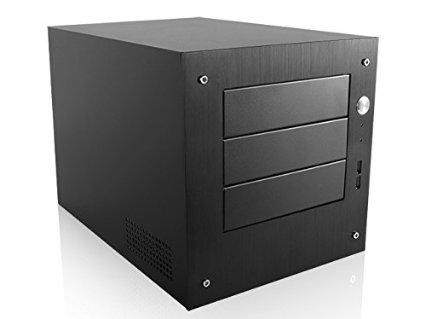A kezdetek
Az alapot egy Arduino UNO szolgáltatta, ehhez vettem még midi shieldet és gombsort plusz kijelzőt.
Örömmel tapasztaltam, hogy Linuxra is van fejlesztő környezet az Arduinohoz, így nem kell Windows-zal vacakolni.
A midi shieldet, plusz a kezdeti LCD kijelzőt innen vettem.
Azért esett erre az oldalra a választás, mert itt készen van a kijelző és a shiled. Nem nagyon kell forrasztani, nekem pedig ez elég volt akkor.
Azért indult el ez a projekt, mert midiről vezérelhető digitális metronómot nem nagyon találtam készen.
Arduinora viszont létezik egy kész program, ami pont azt csinálja, ami nekem kell. Úgy gondoltam, jó lesz kiindulási alapnak. :)
Az első eredmény
Nem is csalódtam! Amint megérkezett a shield és a kijelző kombó, megírtam életem első Arduino programját C++-ban! És láss csodát, működött!
Sőt, át tudtam alakítani a gites programot úgy, hogy a shielddel és a kijelzővel működjön.







 Nézegettem a risereket, de olyan esetlennek tűntek, és még drágák is voltak. Ami tetszett, az kb 20k volt, ennyit szerintem nem éri meg rá áldozni. Megláttam ebay-en egy olyan risert amit bányászáshoz használnak. Gondolom sokan ismerik, PCI-E x1-ből csinál PCI-E x16-ot, egy USB 3.0 kábel segítésével. Az ára sem vészes. De mi lenne ha az x1-es PCI-E véget lecserélném egy mini pci-e foglalatra aminek szintén usb 3.0 vége van. Na ilyet nem találtam elsőre, de nagy nehezen sikerült ráakadni..
Nézegettem a risereket, de olyan esetlennek tűntek, és még drágák is voltak. Ami tetszett, az kb 20k volt, ennyit szerintem nem éri meg rá áldozni. Megláttam ebay-en egy olyan risert amit bányászáshoz használnak. Gondolom sokan ismerik, PCI-E x1-ből csinál PCI-E x16-ot, egy USB 3.0 kábel segítésével. Az ára sem vészes. De mi lenne ha az x1-es PCI-E véget lecserélném egy mini pci-e foglalatra aminek szintén usb 3.0 vége van. Na ilyet nem találtam elsőre, de nagy nehezen sikerült ráakadni.. Úgyhogy ismét ebay-hez nyúltam.
Úgyhogy ismét ebay-hez nyúltam.









